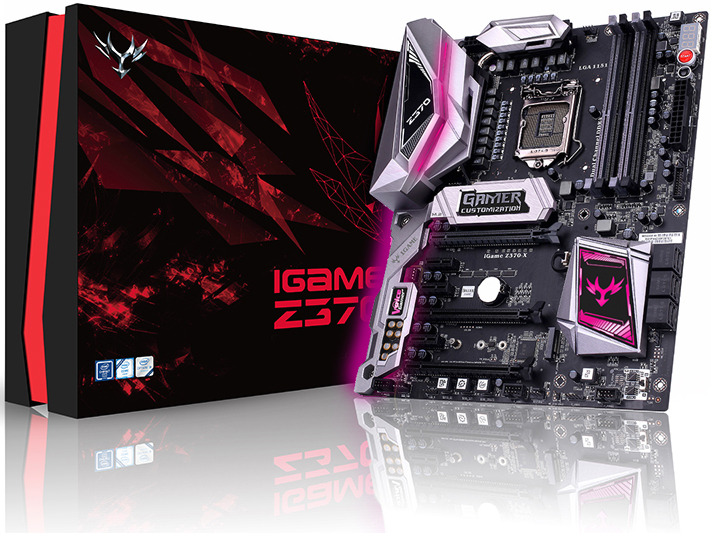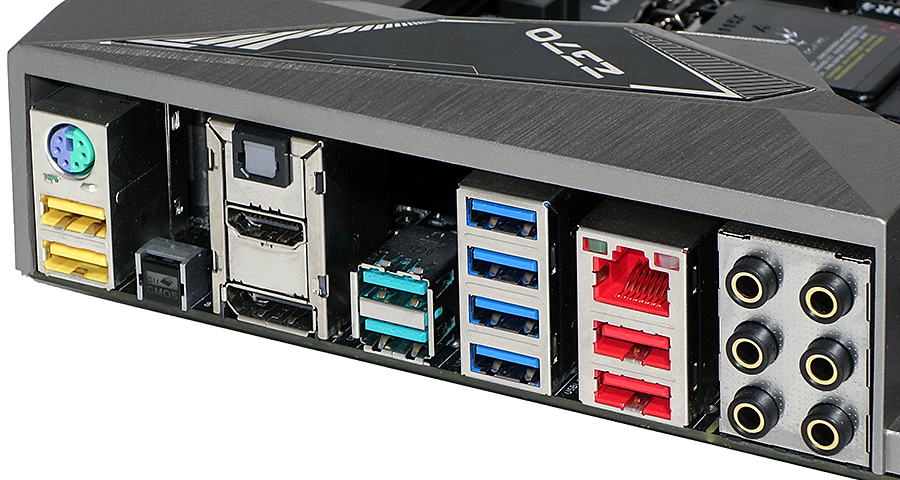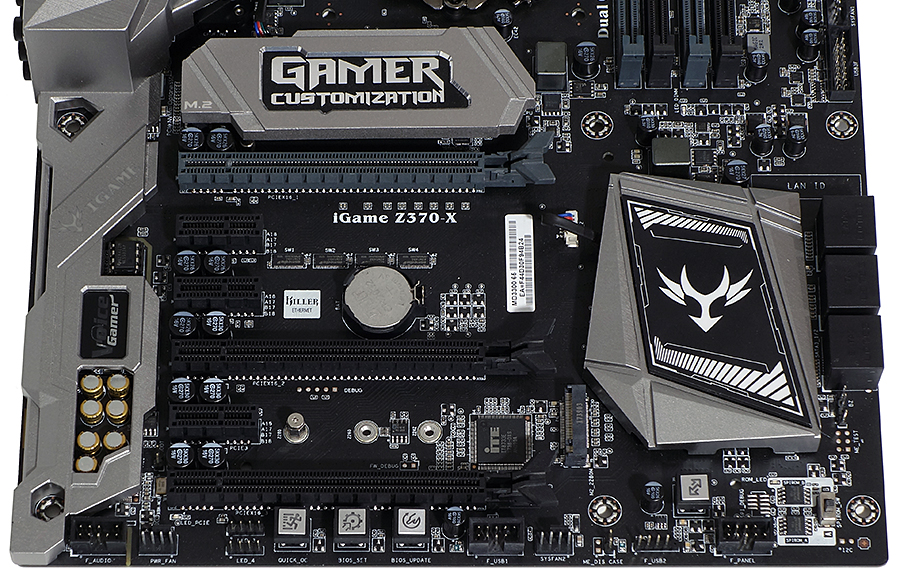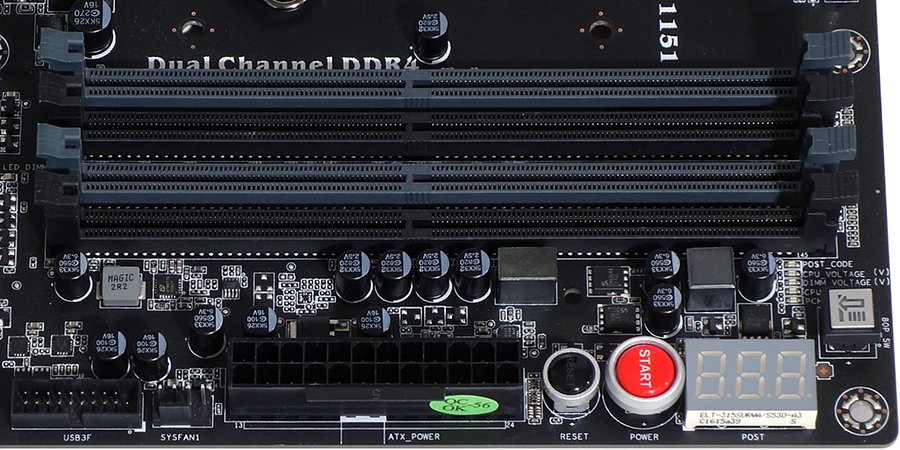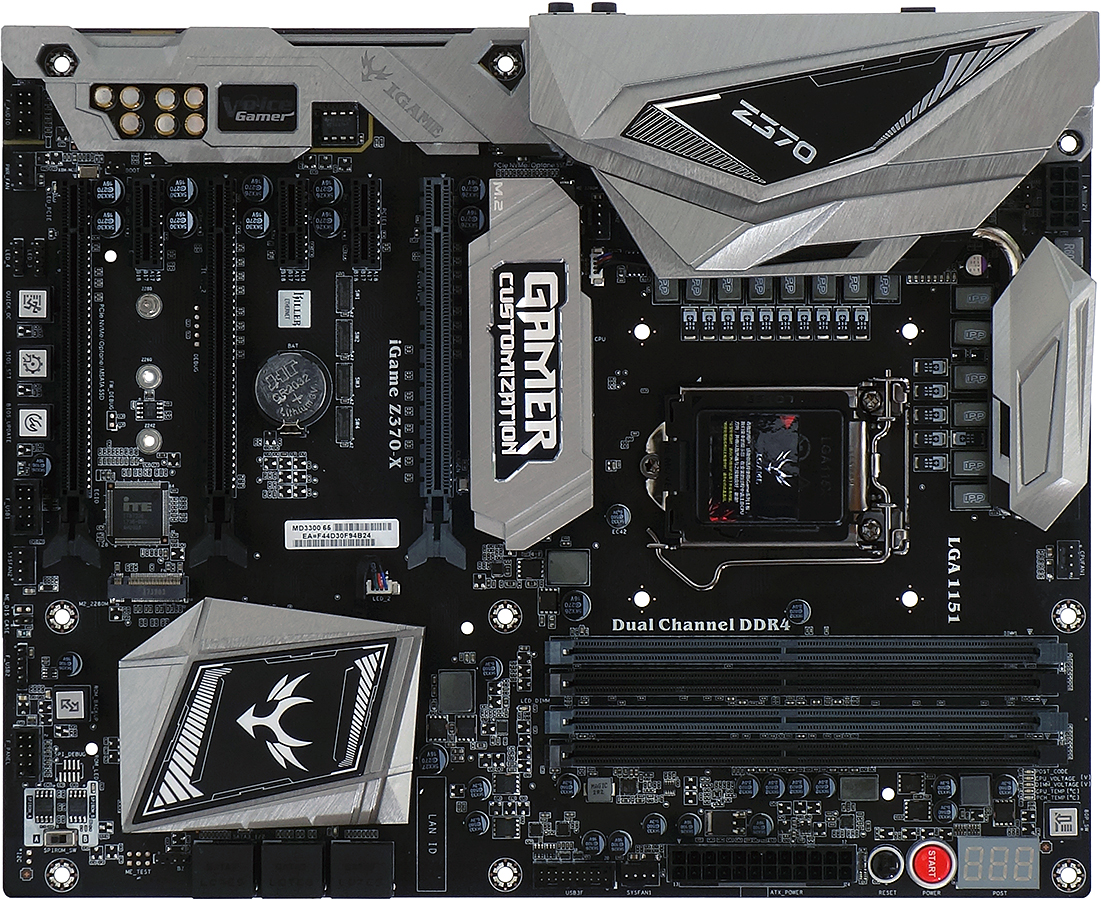Early Verdict
While the iGame Z370 Vulcan X V20 looks nicely designed, small items (ranging from its manual to its firmware) need some final polish, making it a tough sell as a high-end enthusiast Z370 board.
Pros
- +
Good overall layout
- +
Handy function buttons
- +
10 I/O-panel USB ports
Cons
- -
Current Limit Throttling prevents Core i7-8700K overclocking
- -
Did not support our DDR4-3866’s XMP configuration
- -
Older onboard controllers reduce appeal to high-end market
- -
M.2 heat spreader attached with screws from the back side
Why you can trust Tom's Hardware
Features & Layout
If you’re the kind of builder who shops extensively before making a purchase, you’ve probably seen Colorful components pop up from time to time on the domestic market. Certain foreign sellers have long sought to cash in on the U.S. market by filling gaps, and Colorful has the volume to help it do just that. Yet for most of us, the volume that reaches our shores has represented little more than a trickle. The iGame Z370-X might change all that.
That last sentence is certain to draw a bunch of questions, the first of these its name: The iGame Z370-X is printed right on the board. Colorful added "Vulcan" to the name on the product’s web page. The V20 addition appears to have happened later, when the manufacturer was setting up its support site. So, various short versions of the "iGame Z370 Vulcan X V20" name appear in different places.
As to your other question, Colorful remains a graphics card maker, but it has slowly worked its way into the motherboard business over the past few years. Now that some of its sellers are reaching the U.S. market through larger sites, Colorful sees an opportunity to broaden its market presence.
The high-end basics are covered, with a filled-out I/O panel that includes Gen2 USB 3.1, triple x16-length PCIe slots, dual M.2 with NVMe, and a 14-phase voltage regulator. A few things you don’t expect to see on a high-end board meant for the U.S. market include the previous-gen HDMI TMDS, network, USB 3.1, and audio controllers.
The I/O panel brings back some features that will certainly be useful to people who do everything from a single PC, such as the six analog audio jacks that allow one to run 7.1 surround without sacrificing Line-In or Line-Out, and the four USB 2.0 ports that allow one to configure a mouse/keyboard/printer/scanner without sacrificing any of the higher-speed USB interfaces. Those higher-speed ports include four USB 3.0 and two USB 3.1 Gen2, but to the chagrin of some mobile-device users, both 10Gb/s ports are Type-A and share bandwidth. We also find a single Gigabit Ethernet port, optical S/PDIF, HDMI, DisplayPort, and a CLR_CMOS button.
Four buttons highlight the iGame Z370 Vulcan X V20’s bottom edge, including Quick OC (it bumps the FSB by 5% upon restart), BIOS Set (it forces the board into its firmware GUI at restart), BIOS Update (it sends the board into firmware update mode at restart), and a button that forces the board to copy the active firmware to the backup ROM. A manual switch allows users to select which firmware to use at boot, but we found that the unit had to be disconnected from power and allowed to drain for a few seconds to ensure that the firmware from the other ROM wasn’t still active.
Interfaces include HD Audio for front-panel cables, two of the board’s five PWM fan headers, both of its RGB cable headers, a full nine-pin (two-port) USB header, a case-intrusion-switch header, a five-pin (single-port) USB header, and an Intel-style front-panel switch/LED combo header. The nine-pin and five-pin USB headers explain the odd-looking "1.5" number expressed in our features table.
Get Tom's Hardware's best news and in-depth reviews, straight to your inbox.
Three more buttons that highlight the top of the front edge are reset, power, and a mode switch for the three-digit status code display. Modes for the display include POST code, CPU voltage, DIMM voltage, CPU temperature, and PCH temperature.
Nearby connectors include front-panel USB 3.0, fan, and 24-pin power.
Colorful's documentation shows the iGame Z370 Vulcan X V20’s CPU-based PCIe configuration as being capable of x16/x0, x8/x8, and x8/x4/x4 modes, but we didn’t see the extra two two-lane switches that would have allowed the second slot to donate four lanes to the third slot. Confused, we installed three cards and found that the board is instead configured to use PCH lanes for the third slot, leaving x16/x0 and x8/x8 the only available slot options for the CPU. Users who would like to run a pair of PCIe x4 NVMe drives without relying on the crowded PCH-to-CPU link will thus want to get the M.2 version and put those on a PCIe x8 adapter, in the board’s second slot.
Those of us who aren’t as demanding of drive bandwidth can use the two PCH-linked M.2 slots already on the board. One of these is covered by a heat sink that’s secured by screws on the back of the board, though, so swapping it out might be a little inconvenient. Those eight lanes plus the four-lane PCIe slot consume 12 of the PCH’s 30 HSIO resources. The PCIe-based Ethernet controller, USB 3.1 controller, I/O-panel USB 3.0 ports, front-panel USB 3.0 header, three PCIe x1 slots, and six SATA ports consume 17 of the 18 remaining HSIO resources. Colorful says that one of the M.2 slots is SATA-compatible, and the extra interface (unshared) would account for the remaining HSIO pathway.
The iGame Z370 Vulcan X V20 includes a manual, a driver disc, six SATA cables, a pack of label stickers, an I/O shield, and extender blocks for the front panel switch/LED group and USB 2.0. The inclusion of the switch/LED group extension block makes sense because builders can use it to group/bundle their front-panel leads, but the USB 2.0 extender usefulness is hard to imagine.
Also hard to imagine was why the board didn’t include an SLI bridge, when the manual clearly states (in Chinese) “Motherboard provides 3 PCI Express 3.0 x16 slots, supporting 3-Way/2-Way AMD CrossFire and 2-Way NVIDIA SLI technology.” We dropped in a pair of our own cards with our own bridge, reloaded the display driver, and discovered that the Nvidia driver did not read the appropriate firmware hook required for SLI licensing: There was no interface option to enable SLI.
MORE: Best Motherboards
MORE: How To Choose A Motherboard
MORE: All Motherboard Content
-
g-unit1111 I'll pass. That board is an eye sore compared to what you can get from Gigabyte, Asus, Asrock, or MSI. At least NZXT made their board presentable.Reply -
Crashman Reply
Great find, thanks for the help!20890647 said:Typo in the first paragraph. "help the do just that" -
desuemery No way am I going to trust a motherboard from Colorful. All they do is make bootlegged versions of more popular products... just look at their GPUs. They blatantly copy the cooler design of MSI and other AIB's. That, and this motherboard has that super ugly "GAMER" smack in the middle. Pass.Reply -
pmayojr Pass...Gigabyte, Asus, Asrock, Msi, etc... All have far superior boards in terms of looks and overall functionality...these guys are no more than rip-off artists anyway.....not to mention no reinforced PCIe ports.. and price.Reply -
g-unit1111 Reply20890871 said:No way am I going to trust a motherboard from Colorful. All they do is make bootlegged versions of more popular products... just look at their GPUs. They blatantly copy the cooler design of MSI and other AIB's. That, and this motherboard has that super ugly "GAMER" smack in the middle. Pass.
Yeah this looks like a board that some guy near the airport would sell you off the back of his truck. For a "discount". :lol: -
Loadedaxe This wont compete at $369. MSI, Asus and Gigabyte are the best in that price range. Plus is it a eye sore.Reply
Back to the drawing board Colorful, fire the 16 year old that designed this and hire a real engineer. -
justin.m.beauvais So... high on features, low on substance? Yup. That's Colorful for ya. Virtually any other manufacturer will sell you a better board right now, but compared to the MSIs and Gigabytes of the world, Colorful is just starting out. Like with Korean cars, there were some quality issues and growing pains, but they turned out alright-ish (still trying to get there in some aspects). I think Colorful is going to be the same way. Eventually they will get better... so, we wait.Reply -
jr9 This reminds me so much of that car that Homer Simpson designed in terms of looks and price.Reply
